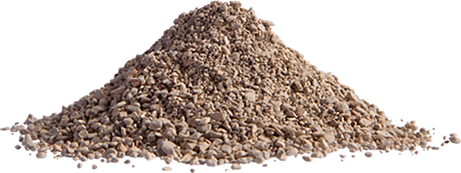DIATOMACEOUS EARTH
Overview:
Diatomaceous Earth, also known as fossil flour, CELITE® (a registered trademark of Imerys Filtration Minerals Inc.), diatom remains, or DE, is a fine, silty, soil-like substance that is composed of fossilized sea creatures known as diatoms. The shells from the diatoms form a sedimentary rock known as diatomite. This rock is easily pulverized into a loose powder called diatomaceous earth. Diatomaceous earth is used in pool filters, toothpaste abrasives, and polishing compounds.
In addition to the applications previously described, diatomaceous earth has a wide variety of commercial and industrial uses. Diatomaceous earth is a main ingredient in dynamite, preventing the nitroglycerin contained in that compound from exploding prematurely. Food Grade Diatomaceous earth has applications as a livestock feed supplement, a preservative for stored grains, odor control for animal bedding and litter areas, a blood clotting element, and an insecticide. Some processors promote the use of diatomaceous earth as a human health food additive.
Characteristics and Challenges:
Diatomaceous earth, with an average bulk density of 16 lb/cu ft 1 can appear in many forms at a processing facility. This includes irregular sized, packable, semi-free-flowing pellets, denser, somewhat abrasive particles, or a finely ground semi- or non-free-flowing powder that is light and aeratable. Consultation with an experienced material handling systems engineer is recommended when considering a diatomaceous earth conveying solution.
Diatomaceous earth is dusty and airborne particles can be a health hazard. It can cut the throat and lungs if inhaled.
Containing the dust is a critical success factor in handling this material. Diatomaceous earth is a crystalline silicate; exposure to this dust can cause lung problems such as irritation, and long-term exposure has been linked to silicosis.2 If the diatomaceous earth arrives at the processing facility in bulk bags, the frames used to discharge the bags should ideally be equipped with additional accessories to completely empty the diatomaceous earth from the bag. This includes features such as spring-loaded frames that will elongate and stretch the bags as they empty and lighten, making them rigid and removing any pockets of diatomaceous earth cornered in the bags. Bag activating devices are usually effective in

agitating the diatomaceous earth, dislodging collections of diatomaceous earth closer to the bag spout, promoting a better flow. Some of these bag activating devices also serve as an airtight seal between the bulk bag and the receiving hopper.
To suppress dust during the dumping and de-gassing of the bulk bags, a high velocity fan drawing dust into cartridge filters is recommended. This arrangement can also act as a vacuum that completely evacuates the bulk bags post discharge, eliminating the potential dusting that could occur when the bags are removed and folded prior to storage or disposal. The cartridge filters can also be activated by an automatic reverse-pulse that returns the filtered dust into the receiving hopper, reducing material waste.
If the diatomaceous earth is packaged in smaller bags, a bag-breaking station with a dust hood, and filter cartridges are likely sufficient to support the manual unloading of the material. A pneumatic pulse can be used to clean the filters and return the diatomaceous earth back into the receiving hopper.
Diatomaceous earth tends to agglomerate, "rat hole" or bridge in hoppers, interrupting the flow of the material. Feed hoppers should be designed with proper geometry and may need to incorporate devices such as air fluidizers, vibrators or mechanical agitators to promote flow. A hopper screen above the receiving vessel will help protect the operators if the material is being dumped manually into a hopper that is equipped with agitating devices.
If the diatomaceous earth is being pneumatically conveyed into a processing system, the blower used to move the air line must be sized to meet the demands of system. Some forms of diatomaceous earth are hygroscopic in nature, tending to absorb moisture from the air. If this problem causes excessive clumping, additional devices may be required to reduce the humidity levels or draw moisture from the diatomaceous earth prior to its entrance into the conveyor.
If a flexible screw is being used to convey the diatomaceous earth, it is important to use a screw that matches the material's characteristics and other application requirements. Generally a screw with a wider, flatter surface is necessary for moving powdered diatomaceous earth up an incline.
Should your diatomaceous earth application feature the loading of bulk bags, the use of vibratory densification decks to de-aerate the diatomaceous earth as it fills and load cells to ensure the desired weight, will greatly maximize the capacity of the bulk bags.
Flexicon Applications:
A Flexicon system featuring a bulk bag unloader and flexible screw conveyor improved filtration effectiveness for a California USA winery. Flexicon bulk handling equipment was essential in re-establishing a closed desalination plant as a major source of drinking water in Tampa Bay, Florida USA.
Consultation with a Flexicon specialist will help you decide if a flexible screw or pneumatic solution best fits your diatomaceous earth application.
Flexicon's expert design and engineering staff will weigh each parameter and recommend the best solution for you. Upon request, Flexicon's test lab will simulate your diatomaceous earth handling functions before the system is installed in your plant.
Flexicon's product line of advanced flow promotion conveyors, high flow hoppers, deaeration/densification decks and a host of other components and accessories are proven performers that promote flow while reducing degradation, dusting and/or the separation of blends comprised of disparate particles.
Related Articles on Diatomaceous Earth:
1 Source: Powder and Bulk. Com - Bulk Density Chart
2 Powder Bulk Solids, April 12, 2011
Sources: Where noted. All other information courtesy of Flexicon Corporation.